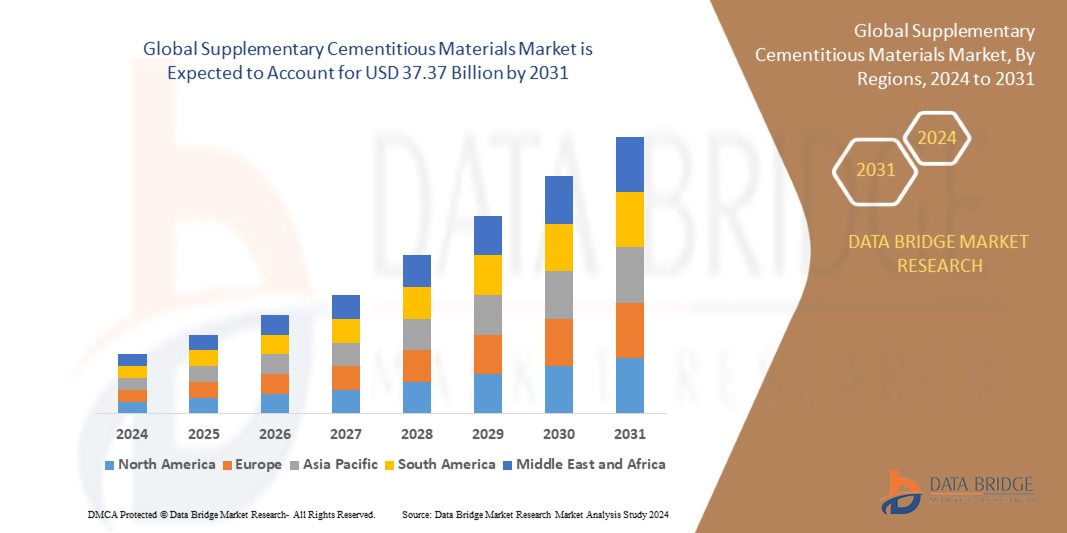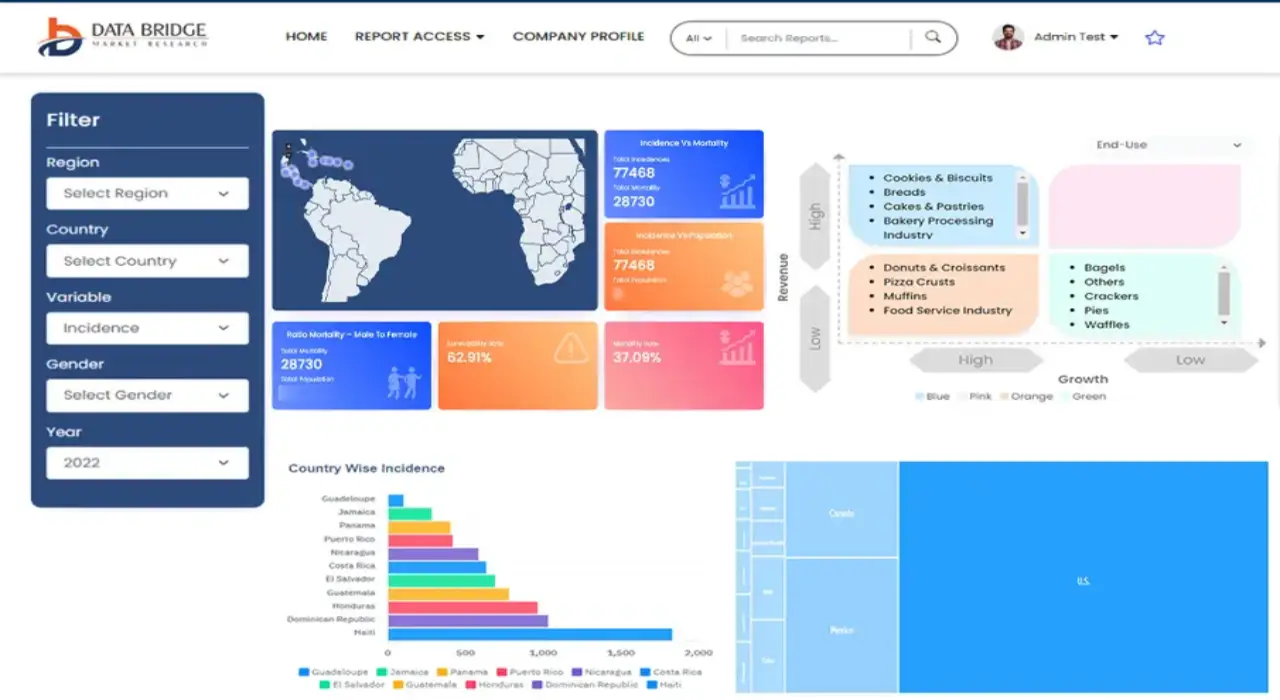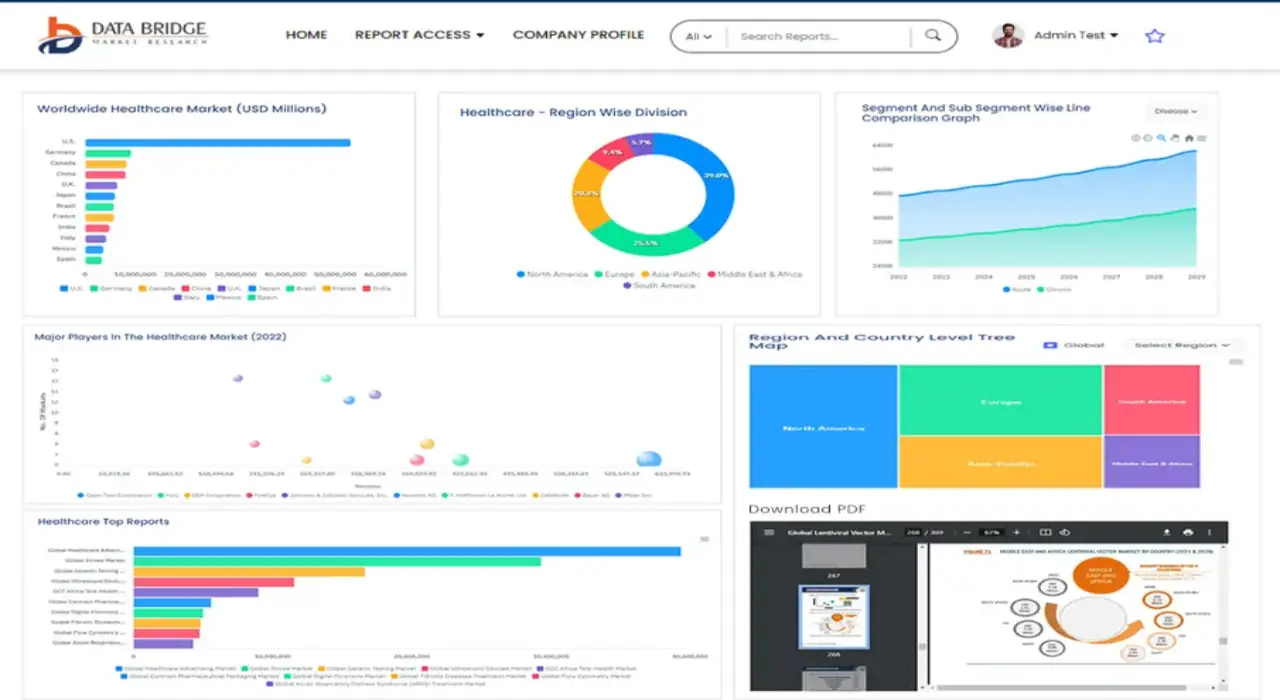Global Supplementary Cementitious Materials Market
시장 규모 (USD 10억)
연평균 성장률 :
% 
 USD
23.81 Billion
USD
37.37 Billion
2023
2031
USD
23.81 Billion
USD
37.37 Billion
2023
2031
| 2024 –2031 | |
| USD 23.81 Billion | |
| USD 37.37 Billion | |
|
|
|
>글로벌 보충 시멘트 재료 시장, 유형별(철 슬래그, 플라이 애시, 실리카 퓸, 슬래그 시멘트, 소성 점토, 석고 및 석회암), 최종 사용자(농업, 주거, 상업, 산업, 인프라 및 기타) - 산업 동향 및 2031년까지의 예측.
보충 시멘트 재료 시장 분석 및 규모
보충 시멘트 재료 시장은 혁신의 급증을 경험하고 있으며, 플라이 애시, 슬래그, 실리카 흄과 같은 친환경 옵션이 두드러지고 있습니다. 향상된 연구 및 개발 노력은 탄소 발자국을 줄이는 동시에 뛰어난 강도와 내구성을 제공하는 고성능 대안의 개발을 촉진합니다. 이러한 발전은 전 세계적으로 지속 가능한 건설 관행으로의 중요한 전환을 강조합니다.
예를 들어, 글로벌 건설 퍼스펙티브와 옥스포드 이코노믹스가 공동으로 실시한 연구에 따르면 인도는 증가하는 주택 수요를 충족시키기 위해 앞으로 14년 동안 매일 31,000채의 주택을 건설해야 하며, 2030년까지는 총 1억 7,000만 채의 주택이 필요할 것으로 나타났습니다.
Data Bridge Market Research는 글로벌 보충 시멘트 재료 시장 규모가 2023년에 238억 1,000만 달러로 평가되었으며, 2031년까지 373억 7,000만 달러에 도달할 것으로 예상되며, 2024년에서 2031년까지의 예측 기간 동안 CAGR은 5.80%가 될 것으로 분석했습니다. 시장 가치, 성장률, 세분화, 지리적 범위, 주요 업체와 같은 시장 시나리오에 대한 통찰력 외에도 Data Bridge Market Research에서 큐레이팅한 시장 보고서에는 심층적인 전문가 분석, 지리적으로 표현된 회사별 생산 및 용량, 유통업체 및 파트너의 네트워크 레이아웃, 자세하고 업데이트된 가격 추세 분석, 공급망 및 수요의 적자 분석이 포함됩니다.
보고 범위 및 시장 세분화
|
보고서 메트릭 |
세부 |
|
예측 기간 |
2024년부터 2031년까지 |
|
기준 연도 |
2023 |
|
역사적 연도 |
2022 (2016~2021년까지 맞춤 설정 가능) |
|
양적 단위 |
매출은 10억 달러, 볼륨은 단위, 가격은 10억 달러 |
|
다루는 세그먼트 |
유형(철 슬래그, 플라이 애시, 실리카 퓸, 슬래그 시멘트, 소성 점토, 석고 및 석회석), 최종 사용자(농업, 주거, 상업, 산업, 인프라 및 기타) |
|
적용 국가 |
미국, 캐나다, 멕시코, 브라질, 아르헨티나, 남미 기타 지역, 독일, 프랑스, 이탈리아, 영국, 벨기에, 스페인, 러시아, 터키, 네덜란드, 스위스, 유럽 기타 지역, 일본, 중국, 인도, 한국, 호주 및 뉴질랜드, 싱가포르, 말레이시아, 태국, 인도네시아, 필리핀, 아시아 태평양 기타 지역, 아랍에미리트, 사우디아라비아, 이집트, 이스라엘, 남아프리카, 중동 및 아프리카 기타 지역 |
|
시장 참여자 포함 |
CEMEX SAB de CV(멕시코), Ferroglobe(미국), Lafarge(프랑스), Charah Solutions, Inc.(미국), HEIDELBERGCEMENT AG(독일), Bharathi Cement Corporation Private Limited(인도), CR Minerals Company, LLC.(미국), Boral(호주), Sika AG(스위스), ArcelorMittal SA(룩셈부르크), BASF SE(독일), CRH Canada Group Inc.(캐나다), Tata Steel(인도), Adelaide Brighton Cement Ltd.(호주), Elkem ASA(노르웨이), FLSmidth(덴마크), Argos USA LLC(미국), 3M(미국) |
|
시장 기회 |
|
시장 정의
보충 시멘트 재료(SCM)는 성능과 지속 가능성을 향상시키기 위해 콘크리트 혼합물에 첨가되는 물질입니다. 여기에는 플라이 애시, 슬래그 시멘트, 실리카 흄이 포함됩니다. SCM은 내구성을 개선하고, 탄소 발자국을 줄이며, 콘크리트의 작업성을 향상시킵니다. 시멘트를 부분적으로 대체함으로써 콘크리트 품질을 유지하거나 개선하는 동시에 비용을 낮추고 환경에 미치는 영향을 줄이는 데 기여합니다.
보충 시멘트 재료 시장 동향
운전자
- 고성능 콘크리트에 대한 수요 증가
고층 빌딩, 해양 구조물, 원자력 발전소와 같은 중요한 응용 분야에서 고성능 콘크리트에 대한 수요가 증가함에 따라 보충 시멘트 재료(SCM)의 보급이 촉진되고 있습니다. SCM은 콘크리트의 강도, 내구성 및 분해 저항성을 향상시켜 현대 건설 프로젝트의 엄격한 요구 사항을 충족시키고 시장 성장을 크게 촉진합니다.
- 환경 규정 및 지속 가능성 이니셔티브
엄격한 환경 규정과 지속 가능한 건설 관행에 대한 집중은 플라이 애시, 슬래그, 실리카 흄과 같은 SCM에 대한 수요를 증가시키고 있습니다. 이러한 기존 시멘트에 대한 친환경적 대안은 탄소 배출과 폐기물 처리를 줄입니다. 결과적으로 산업이 규제 기준과 환경 목표를 충족하기 위해 보다 친환경적인 솔루션을 모색함에 따라 SCM 시장이 성장하고 있습니다.
예를 들어, 유럽의 엄격한 배출 기준으로 인해 기존 시멘트에 대한 친환경적 대안으로 SCM에 대한 수요가 급증했습니다.
기회
- 인프라 재건 및 개량 확대
인프라 복구 및 노후 구조물 개조는 보충 시멘트 재료(SCM)에 수익성 있는 기회를 제공합니다. SCM은 알칼리-실리카 반응(ASR) 및 황산염 공격과 같은 문제를 해결하여 콘크리트 구조물의 성능을 향상시키고 서비스 수명을 연장하는 데 도움이 됩니다. 이는 전 세계 건설 프로젝트에서 지속 가능한 솔루션에 대한 수요가 증가함에 따라 시장 성장을 촉진합니다.
예를 들어, 2022년 9월, Levenseat과 Organic Innovative Solutions의 합작 투자사인 Innovative Ash Solutions는 영국 전역에 3개의 공장을 설립할 계획으로 연간 54,000톤 규모의 산업적 규모의 대기 오염 제어 잔류물(APCR) 기반 SCM 공장을 건설할 계획을 발표했습니다. 이러한 APCR 기반 SCM은 분쇄된 플라이 애시(PFA)를 대체하는 것을 목표로 합니다.
- 소비자들 사이에서 인지도와 수용도가 높아지고 있습니다.
산업 조직과 정부 기관의 교육 이니셔티브를 통해 건설 산업 전문가들 사이에서 보충 시멘트 재료(SCM)의 이점에 대한 인식이 커지면서 시장 확장 기회가 창출되었습니다. 건축가, 엔지니어, 계약자 및 개발자는 SCM을 건설 프로젝트에 통합하는 것의 환경적, 경제적 이점을 점점 더 인식하고 있으며, 이로 인해 SCM의 수용과 사용이 증가하고 있습니다.
예를 들어, 미국 콘크리트 연구소(American Concrete Institute)의 홍보 프로그램은 콘크리트에 플라이 애시를 통합함으로써 얻을 수 있는 내구성 이점을 강조했는데, 이를 통해 인프라 프로젝트에 참여하는 계약자들이 플라이 애시를 도입하는 사례가 늘어났으며, 보충 시멘트 재료 시장에서 이에 대한 인지도와 수용도가 높아지고 있음을 보여주었습니다.
제약/도전
- 플라이애시 배출량 증가
콘크리트 활동 중 플라이 애시 배출이 증가함에 따라 보충 시멘트 재료(SCM) 시장에 상당한 어려움이 제기되고 있습니다. 일반적으로 사용되는 SCM인 플라이 애시가 대기 중으로 방출되면서 지속 가능한 시멘트 생산을 위한 이 귀중한 재료의 가용성이 감소하여 건설 분야에서 SCM의 성장과 채택이 방해를 받고 있습니다.
- 공급망 제약
보충 시멘트 재료(SCM)에 대한 원자재의 제한된 가용성과 조달 및 운송의 물류적 장애물은 공급망을 교란시켜 불규칙한 가용성 및 가격 변동을 일으킬 수 있습니다. 이러한 과제를 해결하려면 안정적이고 신뢰할 수 있는 SCM 공급을 보장하기 위한 강력한 조달, 유통 및 효율적인 자원 관리 전략이 필요합니다.
이 시장 보고서는 최근의 새로운 개발, 무역 규정, 수출입 분석, 생산 분석, 가치 사슬 최적화, 시장 점유율, 국내 및 지역 시장 참여자의 영향, 새로운 수익 창출처, 시장 규정의 변화, 전략적 시장 성장 분석, 시장 규모, 범주 시장 성장, 응용 분야 틈새 시장 및 지배력, 제품 승인, 제품 출시, 지리적 확장, 시장의 기술 혁신에 대한 분석 기회를 제공합니다. 시장에 대한 자세한 정보를 얻으려면 Data Bridge Market Research에 연락하여 분석가 브리핑을 받으세요. 저희 팀은 시장 성장을 달성하기 위한 정보에 입각한 시장 결정을 내리는 데 도움을 드릴 것입니다.
원자재 부족 및 운송 지연의 영향 및 현재 시장 시나리오
Data Bridge Market Research는 시장에 대한 고수준 분석을 제공하고 원자재 부족과 운송 지연의 영향과 현재 시장 환경을 고려하여 정보를 제공합니다. 이는 전략적 가능성을 평가하고, 효과적인 행동 계획을 수립하고, 기업이 중요한 결정을 내리는 데 도움을 주는 것으로 해석됩니다.
표준 보고서 외에도 예상 배송 지연 등의 조달 수준에 대한 심층 분석, 지역별 유통업체 매핑, 상품 분석, 생산 분석, 가격 매핑 추세, 소싱, 카테고리 성과 분석, 공급망 위험 관리 솔루션, 고급 벤치마킹 및 조달 및 전략적 지원을 위한 기타 서비스를 제공합니다.
경제 침체가 제품 가격 및 가용성에 미치는 영향 예상
경제 활동이 둔화되면 산업이 어려움을 겪기 시작합니다. 경기 침체가 제품의 가격 책정 및 접근성에 미치는 예상 효과는 DBMR에서 제공하는 시장 통찰력 보고서 및 인텔리전스 서비스에서 고려됩니다. 이를 통해 고객은 일반적으로 경쟁사보다 한 발 앞서 나가고, 매출과 수익을 예측하고, 손익 지출을 추정할 수 있습니다.
최근 개발 사항
- 2022년 3월, Lafarge France는 Martres-Tolosane 시멘트 시설을 개편하여 저탄소 시멘트 생산량을 늘리기 위해 1억 2,000만 유로를 할당했습니다. 2022년 2월부터 운영 중인 이 투자는 지속 가능성과 생산 용량을 향상시킵니다.
- Purebase Corporation은 2022년 2월 캘리포니아에서 새로운 보충 시멘트 재료(SCM) 시장을 육성하고 자원 포트폴리오를 다각화하기 위해 주요 수직 통합 재료 회사와 전략적 제휴를 맺었습니다.
- 2021년 12월, LafargeHolcim의 미국 사업부는 발전소 석탄재의 첫 바지선 인도를 받았으며, 이는 시멘트 생산을 위한 600만 톤의 재활용 및 회수를 의미하며 지속 가능한 관행과 자원 효율성에 대한 노력을 강조합니다.
- 2020년 11월, Cemex는 저 CO2 콘크리트 제조를 위해 플라이 애시 및 슬래그와 같은 부산물의 활용을 최적화하고 친환경 솔루션을 발전시키며 환경 영향을 줄이기 위해 Carbon Upcycling Technologies와 협력했습니다.
보충 시멘트 재료 시장 범위
시장은 유형과 최종 사용자를 기준으로 세분화됩니다. 이러한 세그먼트 간의 성장은 산업의 빈약한 성장 세그먼트를 분석하고 사용자에게 귀중한 시장 개요와 시장 통찰력을 제공하여 핵심 시장 애플리케이션을 식별하기 위한 전략적 결정을 내리는 데 도움이 됩니다.
유형
- 철 슬래그
- 플라이애시
- 실리카 흄
- 슬래그 시멘트
- 소성 점토
- 석고
- 석회암
최종 사용자
- 농업
- 주거용
- 광고
- 산업
- 하부 구조
- 기타
보충 시멘트 재료 시장 지역 분석/통찰력
위에 언급된 대로 국가, 유형 및 최종 사용자별로 시장을 분석하고 시장 규모에 대한 통찰력과 추세를 제공합니다.
시장 보고서에서 다루는 국가는 미국, 캐나다, 멕시코, 브라질, 아르헨티나, 남미 기타 지역, 독일, 프랑스, 이탈리아, 영국, 벨기에, 스페인, 러시아, 터키, 네덜란드, 스위스, 유럽 기타 지역, 일본, 중국, 인도, 한국, 호주 및 뉴질랜드, 싱가포르, 말레이시아, 태국, 인도네시아, 필리핀, 아시아 태평양 기타 지역, 아랍에미리트, 사우디 아라비아, 이집트, 이스라엘, 남아프리카, 중동 및 아프리카 기타 지역입니다.
아시아 태평양 지역은 건설 및 도시화 확대로 인해 보충 시멘트 재료 시장을 주도할 것으로 예상됩니다. 중국, 인도, 말레이시아, 싱가포르와 같은 신흥 경제권은 강력한 인프라 성장을 보이며, 이 지역에서 이러한 재료에 대한 수요가 증가하고 있습니다.
보고서의 국가 섹션은 또한 개별 시장 영향 요인과 국내 시장의 현재 및 미래 트렌드에 영향을 미치는 규제 변화를 제공합니다. 다운스트림 및 업스트림 가치 사슬 분석, 기술 트렌드 및 포터의 5가지 힘 분석, 사례 연구와 같은 데이터 포인트는 개별 국가의 시장 시나리오를 예측하는 데 사용되는 몇 가지 포인터입니다. 또한 글로벌 브랜드의 존재 및 가용성과 지역 및 국내 브랜드와의 대규모 또는 희소한 경쟁으로 인해 직면한 과제, 국내 관세 및 무역 경로의 영향은 국가 데이터에 대한 예측 분석을 제공하는 동안 고려됩니다.
경쟁 환경 및 보완 시멘트 재료 시장 점유율 분석
시장 경쟁 구도는 경쟁자별 세부 정보를 제공합니다. 포함된 세부 정보는 회사 개요, 회사 재무, 창출된 수익, 시장 잠재력, 연구 개발 투자, 새로운 시장 이니셔티브, 글로벌 입지, 생산 현장 및 시설, 생산 용량, 회사의 강점과 약점, 제품 출시, 제품 폭과 범위, 애플리케이션 우세입니다. 위에 제공된 데이터 포인트는 시장과 관련된 회사의 초점에만 관련이 있습니다.
시장에서 활동하는 주요 기업은 다음과 같습니다.
- CEMEX SAB de CV(멕시코)
- 페로글로브(미국)
- 라파르주(프랑스)
- Charah Solutions, Inc. (미국)
- HEIDELBERGCEMENT AG(독일)
- Bharathi Cement Corporation Private Limited(인도)
- CR Minerals Company, LLC. (미국)
- 보랄(호주)
- Sika AG(스위스)
- ArcelorMittal SA(룩셈부르크)
- BASF SE(독일)
- CRH Canada Group Inc. (캐나다)
- 타타 스틸(인도)
- 애들레이드 브라이튼 시멘트 유한회사(호주)
- 엘켐 ASA(노르웨이)
- FLSmidth(덴마크)
- Argos USA LLC(미국)
- 3M(미국)
SKU-
세계 최초의 시장 정보 클라우드 보고서에 온라인으로 접속하세요
- 대화형 데이터 분석 대시보드
- 높은 성장 잠재력 기회를 위한 회사 분석 대시보드
- 사용자 정의 및 질의를 위한 리서치 분석가 액세스
- 대화형 대시보드를 통한 경쟁자 분석
- 최신 뉴스, 업데이트 및 추세 분석
- 포괄적인 경쟁자 추적을 위한 벤치마크 분석의 힘 활용
연구 방법론
데이터 수집 및 기준 연도 분석은 대규모 샘플 크기의 데이터 수집 모듈을 사용하여 수행됩니다. 이 단계에는 다양한 소스와 전략을 통해 시장 정보 또는 관련 데이터를 얻는 것이 포함됩니다. 여기에는 과거에 수집한 모든 데이터를 미리 검토하고 계획하는 것이 포함됩니다. 또한 다양한 정보 소스에서 발견되는 정보 불일치를 검토하는 것도 포함됩니다. 시장 데이터는 시장 통계 및 일관된 모델을 사용하여 분석하고 추정합니다. 또한 시장 점유율 분석 및 주요 추세 분석은 시장 보고서의 주요 성공 요인입니다. 자세한 내용은 분석가에게 전화를 요청하거나 문의 사항을 드롭하세요.
DBMR 연구팀에서 사용하는 주요 연구 방법론은 데이터 마이닝, 시장에 대한 데이터 변수의 영향 분석 및 주요(산업 전문가) 검증을 포함하는 데이터 삼각 측량입니다. 데이터 모델에는 공급업체 포지셔닝 그리드, 시장 타임라인 분석, 시장 개요 및 가이드, 회사 포지셔닝 그리드, 특허 분석, 가격 분석, 회사 시장 점유율 분석, 측정 기준, 글로벌 대 지역 및 공급업체 점유율 분석이 포함됩니다. 연구 방법론에 대해 자세히 알아보려면 문의를 통해 업계 전문가에게 문의하세요.
사용자 정의 가능
Data Bridge Market Research는 고급 형성 연구 분야의 선두 주자입니다. 저희는 기존 및 신규 고객에게 목표에 맞는 데이터와 분석을 제공하는 데 자부심을 느낍니다. 보고서는 추가 국가에 대한 시장 이해(국가 목록 요청), 임상 시험 결과 데이터, 문헌 검토, 재생 시장 및 제품 기반 분석을 포함하도록 사용자 정의할 수 있습니다. 기술 기반 분석에서 시장 포트폴리오 전략에 이르기까지 타겟 경쟁업체의 시장 분석을 분석할 수 있습니다. 귀하가 원하는 형식과 데이터 스타일로 필요한 만큼 많은 경쟁자를 추가할 수 있습니다. 저희 분석가 팀은 또한 원시 엑셀 파일 피벗 테이블(팩트북)로 데이터를 제공하거나 보고서에서 사용 가능한 데이터 세트에서 프레젠테이션을 만드는 데 도움을 줄 수 있습니다.















